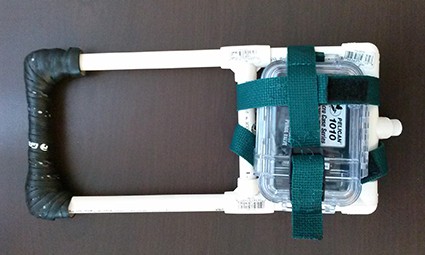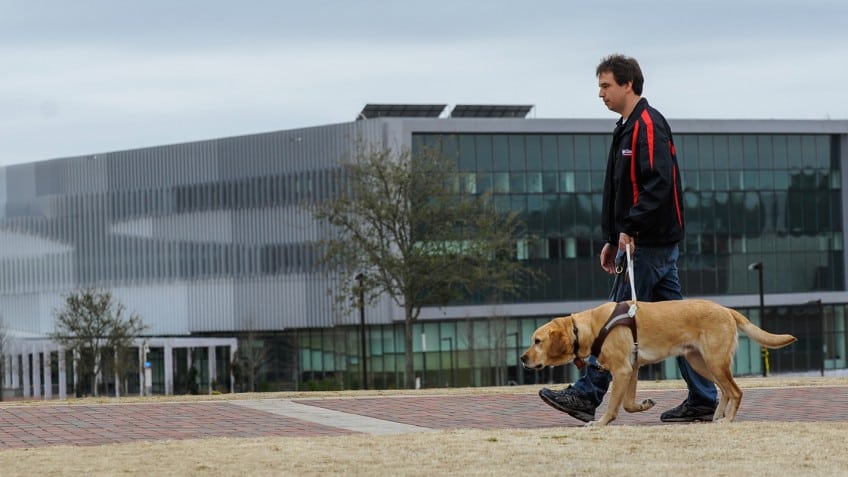The study, which was presented this week at the International Congress on Animal Computer Interaction, builds on previous work the team had done on measuring canine vital signs. With the addition of nonvisual feedback via the handle of the dog’s harness, the system can now relay that health information back to the handler in real-time.

Two vibrating motors are embedded in the harness handle. The first is by the handler’s thumb, and pulses in time with dog’s heart rate. The second, located by the fifth finger, vibrates in synch with the dog’s breathing, increasing in intensity as the respiration rate goes up.
“Our goal is to let guide dog handlers know when their dogs are stressed or anxious,” says Sean Mealin, a PhD student at NC State and lead author of the paper.
“This is important because it is widely believed that stress is a significant contributing factor to early retirement of guide dogs and other service animals. The technology may also be able to help handlers detect other health problems, such as symptoms of heat exhaustion.”

The work carries particular weight for Mealin, who is himself blind and works alongside his own guide dog, Simba. So far, the prototype handle has been tested using simulated heart rate and respiratory data, and was found to be effective at accurately conveying information to users.
“We’re refreshing the design and plan to do additional testing with guide-dog handlers,” said David Roberts, an assistant professor of computer science at NC State and co-author of the paper.
“Our ultimate goal is to provide technology that can help both guide dogs and their people. That won’t be in the immediate future, but we’re optimistic that we’ll get there.”




Mandate sets 2030 date for use of sustainable aviation fuel
I do hope this doesn't cause costs to UK aviation to rise and lose business to those staying on fossil fuels.